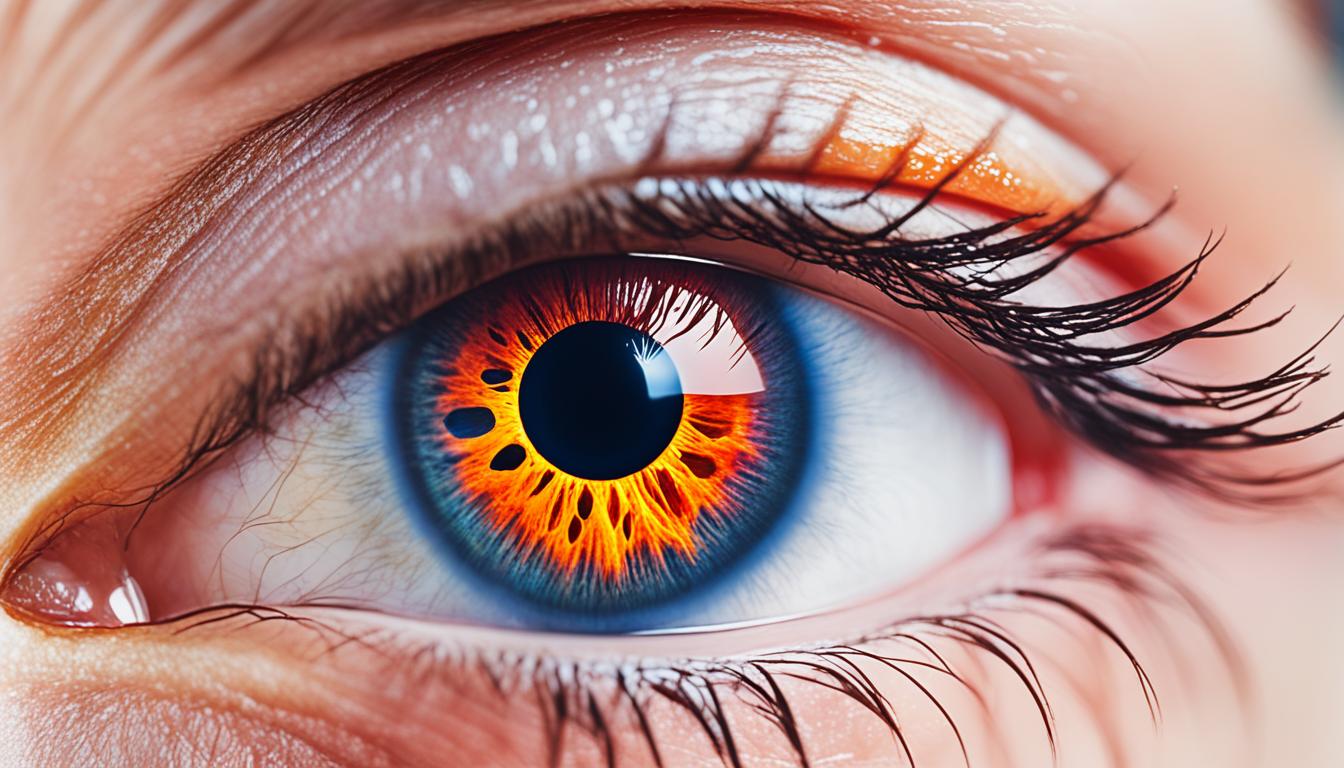Keratitis is a serious eye infection that needs immediate attention. If not treated in time, it can cause dangerous complications and vision loss. This infection targets the cornea, the clear front layer of the eye.
People with keratitis may feel discomfort, eye pain, see redness, and find their vision blurry. Light may hurt their eyes, and they might feel like something is in their eye. The infection can come from viruses and bacteria, injuries, wrong contact lens care, and dirty water.
Doctors diagnose keratitis with a meticulous eye check-up. They might suggest using medicine in the form of antibiotic or antiviral drops. For serious situations, they could propose stem cell therapy. This new treatment option involves planting new corneal stem cells. These cells help heal and rebuild the damaged cornea.
Preventing keratitis is key. You can do this by keeping your eyes clean, taking good care of your contact lenses, and avoiding eye injuries and dirty water.
Key Takeaways:
- Keratitis is a dangerous eye infection that can lead to severe complications and vision loss if left untreated.
- Common symptoms include eye pain, redness, and blurry vision.
- Causes of keratitis can include viral and bacterial infections, eye injuries, improper contact lens care, and exposure to contaminated water.
- Diagnosis is typically done through a comprehensive eye examination.
- Treatment options include medication, such as eye drops, and in severe cases, stem cell therapy.
Causes and Risk Factors of Keratitis
Keratitis is a severe eye infection caused by various things. Knowing the causes and risk factors helps stop and treat it. This is vital for anyone trying to avoid keratitis.
Viral Infections
Viruses like herpes simplex and varicella-zoster can cause keratitis. They get into the eye through direct contact or in the blood. This causes the cornea to get inflamed and damaged.
Bacterial Infections
Not cleaning contact lenses well or eye injuries up your risk of bacterial keratitis. If bacteria isn’t washed off your lenses or gets in through cuts, the cornea can become infected. This leads to damage.
Fungal and Parasitic Infections
Coming in contact with dirty water or soil might get you a fungal or parasitic keratitis. It is key to shield your eyes from these types of infections by keeping good eye hygiene.
Risk Factors
Several things can make you more likely to get keratitis:
- Not taking care of or wearing contact lenses too long
- Eye injuries like scratches or cuts
- Having a weak immune system
- Poor eye cleanliness
- Being in places with lots of dust, products or germs
- Having dry eyes
- Not having enough vitamin A
- Certain other diseases
Knowing about these causes and risks helps you prevent keratitis. Good eye hygiene, careful contact lens care, and staying away from eye hazards cut the risk a lot.
If you see any signs of keratitis, get medical help quickly for the best chance of avoiding issues. Acting early can save your eyesight.
| Causes | Risk Factors |
|---|---|
| Viral infections (like herpes simplex and varicella-zoster viruses) | Not taking care of contact lenses well or wearing them too long |
| Bacterial infections (from not cleaning contacts or eye injuries) | Eye injuries (like scratches or cuts) |
| Fungal and parasitic infections (from dirty water or soil) | Weak immune system |
| Poor eye hygiene | |
| Being in very dusty, dirty, or germ-filled places | |
| Having dry eyes | |
| Not enough vitamin A | |
| Certain other diseases |
Treatment and Prevention of Keratitis
Managing keratitis early is key to avoiding further issues and keeping your sight. The needed treatment varies based on the infection’s cause and how severe it is.
For mild to moderate keratitis, doctors often prescribe antibiotic or antiviral eye drops. If it’s more severe, you might need oral antibiotics or antifungal meds. Sometimes, when the infection is deep or other treatments haven’t worked, some people might benefit from stem cell therapy. This special treatment can help repair a seriously damaged cornea.
Avoiding keratitis is as vital as treating it. Good eye hygiene is a major part of keeping infections away. Remember to wash your hands before touching your eyes. Don’t rub your eyes too much, and make sure to clean and store your contact lenses right.
Sharing eye care items is a big no, and you should always protect your eyes from injury. Regular check-ups with your eye doctor are also crucial. They can catch any conditions early that might raise your keratitis risk.

